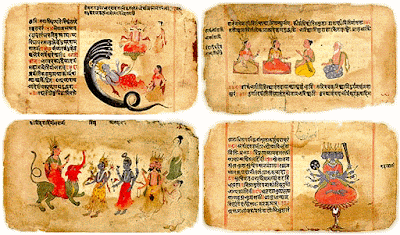VEDIC CULTURE
Introduction
The cities of the Harappan Culture had declined by 1500 B.C. Around this period, according to Rig Veda, Aryan (Earliest specimen of the Indo-European languages, Sanskrit) entered the north-west India from the Indo-Iranian region. First, Aryan appeared in Iran, where Indo-Iranians lived for a long time. And then they came to India. Their initial settlements were in the valleys of the north-west and the plains of the Punjab. Later, they moved into Indo-Gangetic plains. As they were mainly a cattle keeping people, they were mainly in search of pastures. By 6th century B.C., they occupied the whole of North India, which was referred to as Aryavarta. This period between 1500 B.C and 600 B.C may be divided into the Early Vedic Period or Rig Vedic Period (1500 B.C -1000 B.C) and the Later Vedic Period (1000B.C-600 B.C).
Origin and Identity of Aryans
Aryans spoke the Indo-European language, Sanskrit. They seem to have lived somewhere in the area east of the Alp, in the region known as Eurasia. But the original home of the Aryans is still a debatable question and there are several views. Different scholars have identified different regions as the original home of the Aryans.
The earliest life of Aryans seem to have been mainly pastoral. They used several animals. The most important was Horse. But it should be remembered that this animal was unknown to the Harrapans. And some historians remarked that because of horse, Aryan could come to India.
Vedic Literatures
Besides the Vedas, there are other sacred works like the Brahmanas, the Upanishads, the Aranyakas and the epics Ramayana and Mahabharata. The Brahmanas are the treatises relating to prayer and sacrificial ceremony.
The Upanishads are philosophical texts dealing with topic like the soul, the absolute, the origin of the world and the mysteries of nature. The Aranyakas are called forest books and they deal with mysticism, rites, rituals and sacrifices. The author of Ramayana was Valmiki and that of Mahabharata was Vedavyas.






Comments
Post a Comment